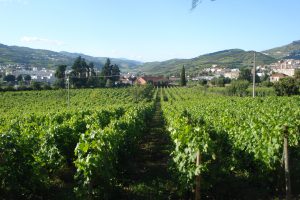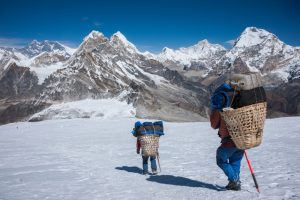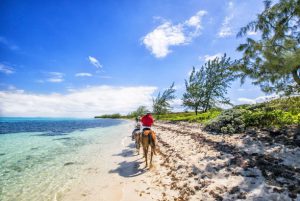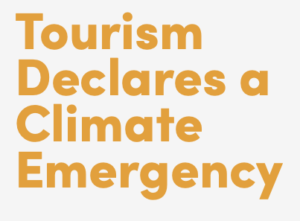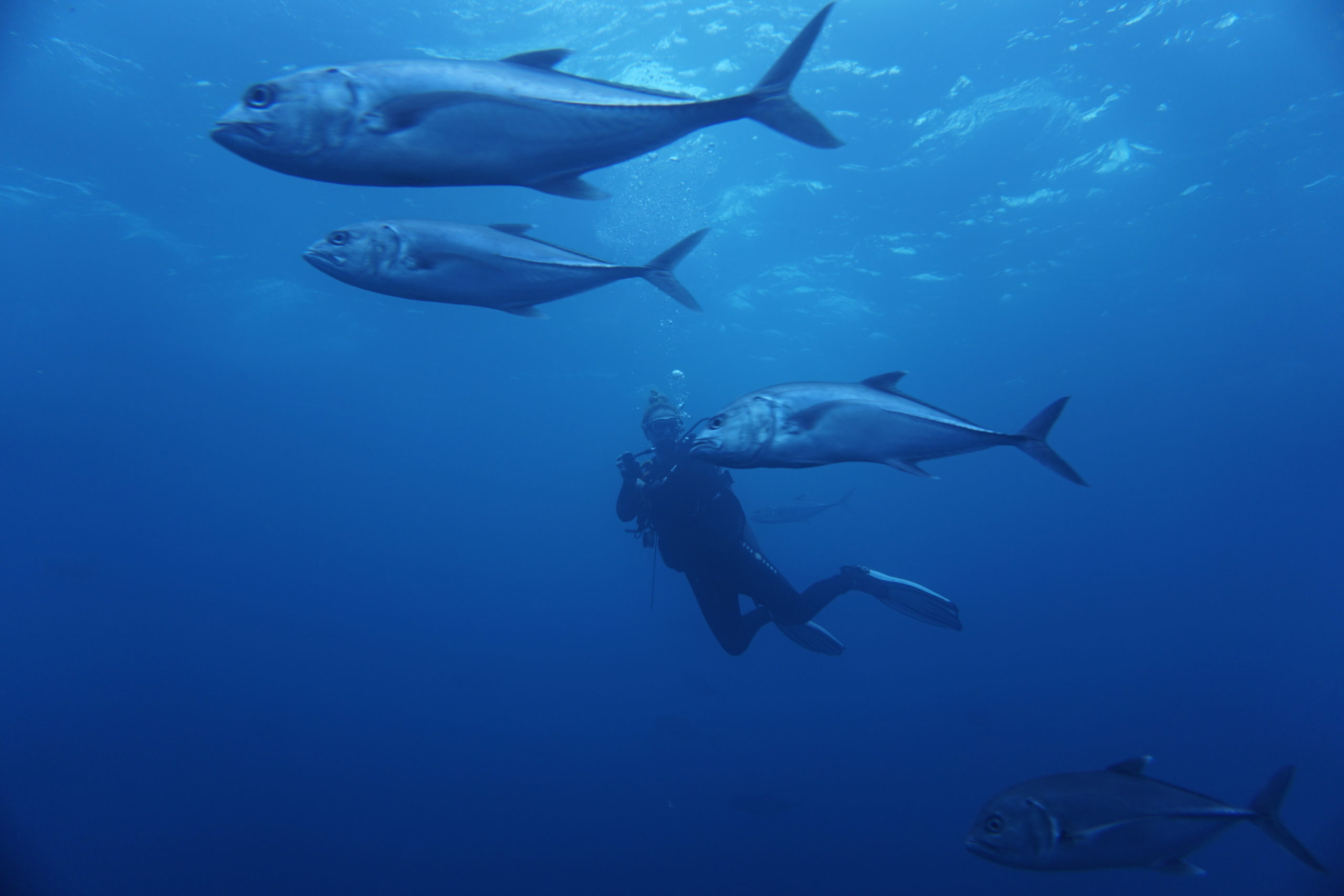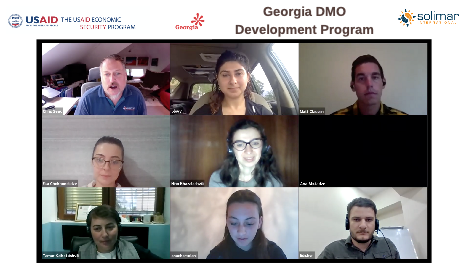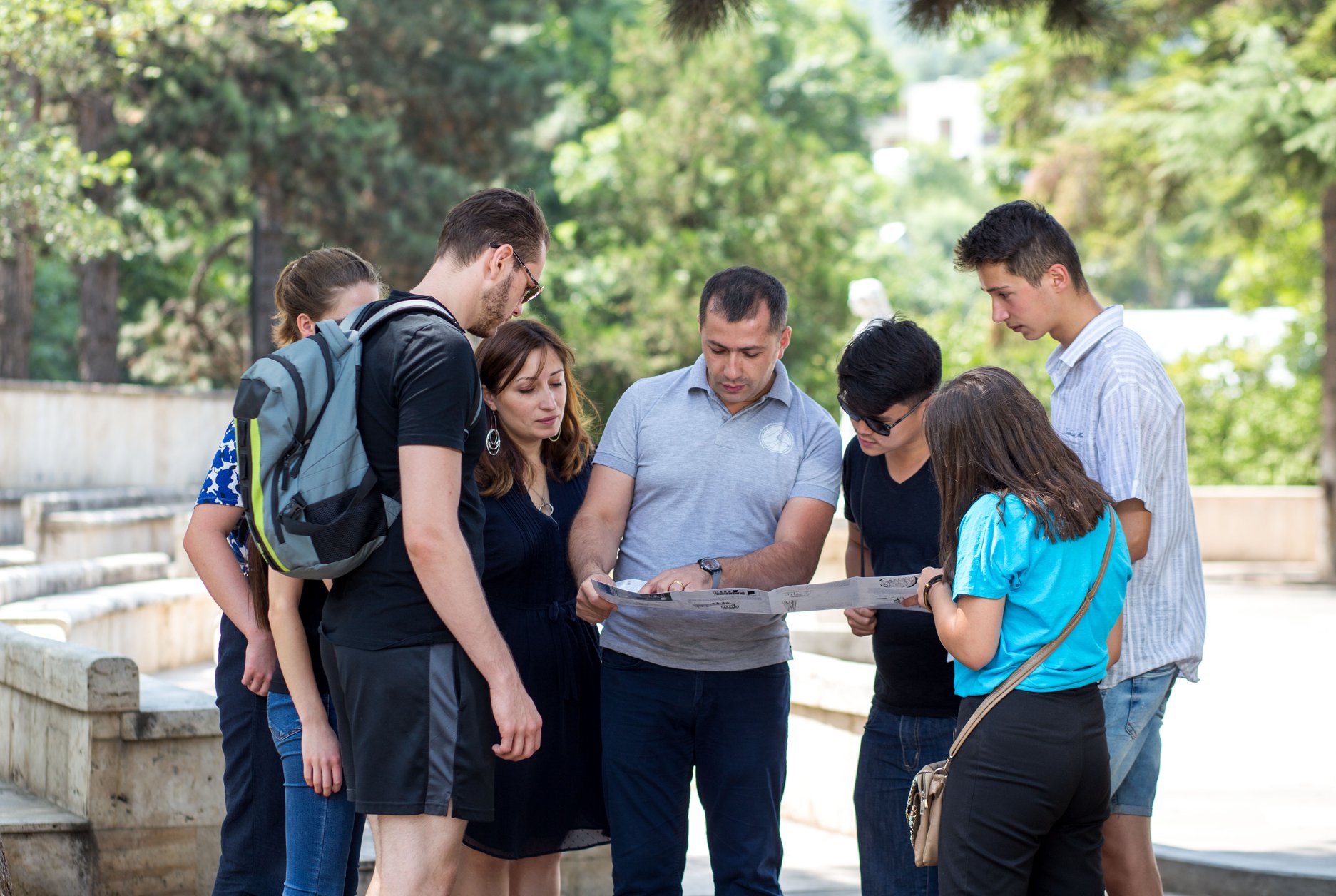As the tourism industry continues to adapt and make sense of this unprecedented year, the team at Solimar has taken time to sit back and reflect on our past travel experiences. We asked ourselves, “What was that one travel moment that set me on the career/academic path of sustainability in tourism?”
Here are our answers:
Chris Seek
My first introduction to the concept of ecotourism took place while studying abroad in Costa Rica during my university studies. It was in Costa Rica where I learned how tourism could be developed in such a way that minimized impact and maximized benefits to the environment. A few years later I was introduced to the concept of Sustainable Tourism at the end of my 6 month road trip through Central and South America when I was starting Solimar. Just before I finished the 6 month adventure I came across the
Yachana Lodge in the Ecuadorian Amazon. This small lodge was not only using tourism to protect the environment but it was also improving the lives of the local indigenous people through improved public health, education, and economic development. I realized then that this is the type of tourism I wanted to support and have dedicated my life to this ever since.
Natalie Sellier
I grew up in a small town where tourism is critically important, so I had a fondness for the industry and appreciation for those truly special destinations even before I understood authenticity as a marketing term. After realizing that I accepted my first job out of college because it required over 50% travel, I knew I wanted to pivot and dedicate my career to the industry. Grad school at George Washington University introduced me to tourism consulting through a practicum in Istanbul, however it was a road trip throughout East Africa afterwards where I realized how truly incredible some destinations on this planet are that need to be preserved for future generations. I was able to see firsthand how sustainable tourism was supporting both the conservation of these places and creating economic opportunities for residents—and could serve as a tool for not only cities and small towns, but rural communities and protected areas alike.
Derek Schimmel
I was fortune enough to grow up vacationing in traditional sun, sand & sea destinations, exploring the beaches and resorts that dot the coasts of the Caribbean and Mexico. I understood the traditional ‘big-box’ travel experience but wasn’t well-versed on the idea of sustainability in tourism until I embarked on a backpacking trip through Southeast Asia. It was during this 7-month adventure — galavanting through Thailand, Cambodia and Laos with nothing but a bag on my back — that I began to understand the value of community tourism and the benefits of cultural immersion. Each day, with the world as my oyster, I would dive deep into a foreign destination and experience the unknown. It wasn’t before long that I understood that there was one resource that made each place memorable: its people. As the trip progressed, it became apparent that these people and their ways of life would be at risk as the world became flatter and tourism grew exponentially. These
community-based experiences taught lessons of acceptance, patience and self-awareness, and in arriving at this realization I opted to pivot my career in hopes of bringing these places to the forefront of the tourism ecosphere.
Chloe King
I grew up believing in mermaids, entranced by the magic of the ocean and the alien-like creatures below its surface. At eighteen, I set off alone for a year to work as a dive guide in Indonesia and Thailand. I witnessed firsthand the power of tourism to transform livelihoods and preserve fragile ecosystems. I assisted in re-training dynamite fishermen to become local dive guides, watching their eyes light up in wonder with their first underwater breath. Together, we found the magic I believed in as a child beneath the surface: whale songs haunting us from the depths; kaleidoscopes of color layered over eons in coral shallows; intelligent eyes of my first manta ray finding ours, suspended before us, while we cut a fishing line from her 20-foot wings. After this first encounter, I watched two ex-manta ray hunters swim with one for the first time, after a lifetime of killing thousands. Hiding his tears, one exhaled: “Beautiful.”We protect what we love and what we learn to value. That is the lesson I have learned over five years of returning to coastal communities of Indonesia, understanding the myriad ways in which all of humanity is inextricably linked to life beneath the sea. Tourism to me is a clear pathway for establishing new values for these precious ecosystems–values rooted in respect for natural and cultural heritage–while ensuring that these local communities can continue to benefit from the magical marine life that has sustained them for countless generations.
Brigid Finley
Over the last several years two tourism experiences have really struck me in terms of the impact on culture, ecosystem and economy. First, Feynan Ecolodge in Jordan’s Dana Biosphere Reserve which is located in a remote area which was once one of the top three mining hubs in the world. The lodge puts a majority of its profits back into local conservation efforts. These initiatives are numerous, and include research of the Reserve’s animal population and biodiversity, employment opportunities for the local Bedouin communities as an alternative to mining and education, locally, nationally and internationally on the importance of conservation.
Another very memorable experience was witnessing the incredible success and commitment Rwanda has made to protecting their number one tourism asset, the mountain gorillas in the Virunga Mountains. Rwanda has created an incredible ecosystem around the experience. Local communities benefit in a tourism revenue-sharing scheme, receiving a percentage of annual income generated by Virunga National Park to fund community projects, including roads and small enterprises, while lodges such as Sabyinyo Silverback Lodge, are co-owned by local community members who also receive portions of the lodge’s revenue. Tourism has also created opportunities for Rwandans to open safari companies and private transportation companies, as well as other tourism related jobs from animal trackers and guides to waiters and front desk staff. Communities now have an incentive to protect the mountain gorilla and its habitat, instead of poaching and hunting, or using the area as farmland.
Stephanie Auslander
My passion for sustainable tourism started in 2015 when I went to Jasper National Park in Alberta, Canada. Upon arrival to the national park I quickly absorbed my surroundings; the crisp clean air, the crystal-clean drinking water, and the abundance of wildlife. As we toured the park and learned about the natural destination offerings such as the natural hot springs, hiking trails, and mountain ranges there were efforts to educate us about protection of the environment and leaving it for future generations to enjoy. A few years later I was studying global economic development and sustainable tourism for my master’s program and that led to more knowledge about the power of sustainable tourism in that it can be utilized to minimize impacts on the natural environment, help the local economy, and promote the destinations cultural heritage. In one of my classes I completed an in-depth report on Costa Rica’s sustainable tourism efforts which continued my passion for this field. Throughout the report, I detailed Costa Rica’s commitment to the building of nature-based hotels, biodiversity conservation, and the One Tree Planted program, which aims to achieve carbon neutral status by 2021.
Elizabeth Evans
Throughout my time in college, I was very grateful to learn from many brilliant tourism scholars. In addition to my studies, I was lucky enough to become a part of ASU’s new leadership academy, the Next Generation Service Corps (NGSC). The goal of NGSC was to learn about the private, public, and nonprofit sectors as well as gain knowledge on cross-sector collaboration to become a more effective leader. This led me to think about how I could contribute to the greater good in my own industry, which fueled my passion to pursue a career in the field of sustainable tourism. I learned that tourism can be used as a force for good to aid in community empowerment and conservation efforts. I wanted to work in the tourism industry to raise awareness about the importance of sustainable practices to safeguard natural resources and heritage for future generations.
Mason Meadows
My home state of West Virginia is the only state in the union that lies completely within a mountain region, hence the nickname the Mountain State. Growing up, West Virginians learn that this is the reason our state was “left behind” – because highways and railroads are difficult and expensive to build on mountainous terrain. This simple fact created a paradox in which West Virginia’s greatest assets (rolling hills, wide rivers and deep valleys) were also its worst enemies, effectively restricting major innovation in the state during most of the twentieth century.
I’m from West Virginia’s eastern panhandle – the area lyrically romanticized in John Denver’s Take Me Home, Country Roads. The only place in the entire state that touches both the Shenandoah River and the Blue Ridge Mountains. Home to Shepherdstown (voted the “coolest small town in West Virginia”) and Harpers Ferry (the location of John Brown’s abolitionist raid), the eastern panhandle lies at the convergence of the Potomac and Shenandoah Rivers about an hour outside of the Washington, D.C. metro area.
In the early 2000’s, the eastern panhandle began experiencing a growth in tourism from inner-city folk who were looking for an easy escape from the hustle and bustle. During the first half of the decade, increases in tourism completely reimagined and redefined the towns that I grew up seeing crumble. As tourism exponentially expanded, local governments began working with businesses and conservation groups to enact laws and regulations to ensure the tourism revenue would benefit the local standard of living. By allocating increased funds for improved infrastructure and social services like education and drug rehabilitation, my small community underwent drastic improvements – improvements that directly impacted my own education and access to resources.
I take a particular interest in sustainable tourism because I’ve seen, first-hand, what it has done to build and nourish my community. I find comfort knowing that, in congruence with the expansion of green energy, West Virginia will find its future through sustainable tourism.
Hannah Garland
While I was abroad in Ireland, I had the chance to visit Belfast where I saw the impact of the culture and ecosystem of a place. Belfast stood out to me because there was a cultural and political divide that ended with a ceasefire (not a peace agreement) in the 1990s, what is known by many as “The Troubles.” Even though there was a ceasefire, the cultural and political divide can still be felt and seen throughout the city. I went on various guided tours, with various tour guides, each of whom gave us their interpretation of “The Troubles”. While on the tours, I visited bombing sites, seeing firsthand where the fight began, and where the community has found peace, in “The Peace Wall.” It was an enlightening experience to hear and see the history of the city which still very much shapes the culture today; a place where men and women refuse to shake each other’s hands.
At the end of one of the tours, my tour group went to an education center where former prisoners who were once in paramilitary organizations created an after-school program for young boys and girls, a place where they can unlearn their hatred for one side or the other. I experienced their education programs firsthand, immersing myself in a culture that is so deeply divided.
Nevertheless, within the heart of Belfast, the divide seemed almost traceless to me as I observed the locals enthralled in their daily activities. Belfast is a city that can come together despite deep rooted differences. Experiencing the dichotomy of the city and its people was powerful, educational, and important for understanding the locals and their vibrant enclaves within the city.
Lolya McWest
Last December, I visited a city called Kpalimé in Togo. While hiking in the area, I was mesmerized by the beautiful scenery, the indigenous animals, and the gorgeous waterfalls. My family and I were guided through the region, and we visited a botanical garden maintained by the locals. The plants in the botanical garden were said to be medicinal and had various health benefits. At the end of the tour, we were led to a shop selling some of the roots and leaves from the botanical garden and then to a local gallery to see and possibly purchase art made with plant-based paint. Kpalimé’s economy was being stimulated, small businesses were flourishing, the environment was taken care of, and cultural practices were being shared. I did not realize it then but looking back I see how tourism benefited that rural community. My experience in Togo opened my eyes to sustainable tourism and development, and I know this is the field I want to pursue.
Dominic Gialdini
In February 2020, just before Italy began its country-wide COVID lockdown, I spent a month interacting with local stakeholders (mostly accommodation providers, tourism offices, and municipal representatives) of the Via Francigena in the Valle d’Aosta region. In the shadows of Mont Blanc, this thousand-year-old trade and pilgrimage route spanning Canterbury to Rome follows a dramatic altitude drop from the Great Saint Bernard Pass to a valley that has been inhabited since before the Roman Empire. My purpose was to investigate stakeholders’ perspectives on the route’s sustainability and resilience for my master’s thesis. While conflicting views were discovered, locals generally expressed the socio-cultural value that the path has by virtue of allowing for cross-cultural interactions with pilgrims and trekkers, the increased attention to trail maintenance due to the valorization of the route, and the potential for economic inducement in small communities as a result of visitor presence. My experience with this form of slow tourism caused me to develop a growing interest in Cultural Routes of the Council of Europe Program, and I look forward to exploring some of the other 33 routes in the future!
Lindsey Neuwirth
As a college student studying the environment and environmental practices, I’ve always been aware of the importance of sustainability and being eco-friendly. Traveling has always been a great passion for me, but it wasn’t until recently that I realized how the tourism industry plays such a vital role in the sustainability of our planet. After visiting Holbox Island in Mexico, I experienced how destinations play a major role in this movement. The hotel my family and I stayed at was one of the most incredible, eco friendly places I have ever visited. From metal straws, to no plastic, to clean energy and water, it was outwardly noticeable that sustainability was something this place valued. As I walked around the town I noticed almost no cars, dirt roads, and every other restaurant and hotel displaying the same environmental practices. It then hit me that sustainability was something that was engraved into the culture of this small island. Without these practices, the island would not last long. Coming from a place where habits like this are few and far between, I realized how easily visitors could ruin all the beauty and culture the island and its people embodied. It became important to me that people are aware of how fragile places like that are. This inspired me to bridge my studies of the environment with my passion for travel, so I could take part in the movement of marketing destinations to ensure that they are respected and treated with care by tourists.
Rebecca Morris
I became interested in sustainable tourism because it looks at the travel industry from a broader lens. At GW, the International Institute of Tourism Studies focuses on responsible tourism and job creation for indigenous tribes. GW has also conducted research on urban walkability and tourism, developing strategies to enhance tourism while improving quality of life for residents. That is why I enjoy this field –you can get involved in this work through public policy, cultural heritage, consulting, and a variety of other ways. I have been interested in travel for most of my life, and I like the idea of helping shape the industry responsibly for the next generation.
Rob Carter
2015 was a trip for my lifetime. Cape Town, South Africa to Kruger National Park NE, of Johannesburg.
Tourism can help Cape Town S.A by providing jobs at local eateries and wineries. Fishermen brining in fresh seafood to sell to the chefs right at the market. To be prepared to perfection for the traveler.By providing Safaris in the country at the dominate price it is per traveler, it allows tourism companies to get creative and to have all hands-on deck for an exceptional Travelers experience. The sculptures we bought from local artist were all made from wild teak.
